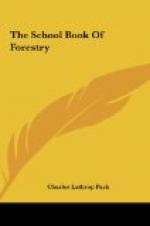CHAPTER XVII
PUTTING WOOD WASTE TO WORK
For many years technical studies of wood were neglected. Detailed investigations of steel, concrete, oil, rubber and other materials were made but wood apparently was forgotten. It has been only during the last decade since the establishment of the Forest Products Laboratory of the United States Forest Service, at Madison, Wisconsin, that tests and experiments to determine the real value of different woods have been begun. One of the big problems of the government scientists at that station, which is conducted in cooeperation with the University of Wisconsin, is to check the needless waste of wood. By actual test they find out all about the wasteful practices of lumbering in the woods and mills. Then they try to educate and convert the lumbermen and manufacturers away from such practices.
The laboratory experts have already performed more than 500,000 tests with 149 different kinds of native woods. As a result of these experiments, these woods are now being used to better advantage with less waste in the building and manufacturing industries. A potential saving of at least 20 per cent. of the timbers used for building purposes is promised, which means a salvage of about $40,000,000 annually as a result of strength tests of southern yellow pine and Douglas fir. Additional tests have shown that the red heartwood of hickory is just as strong and serviceable as the white sap wood. Formerly, the custom has been to throw away the heartwood as useless. This discovery greatly extends the use of our hickory supply.




